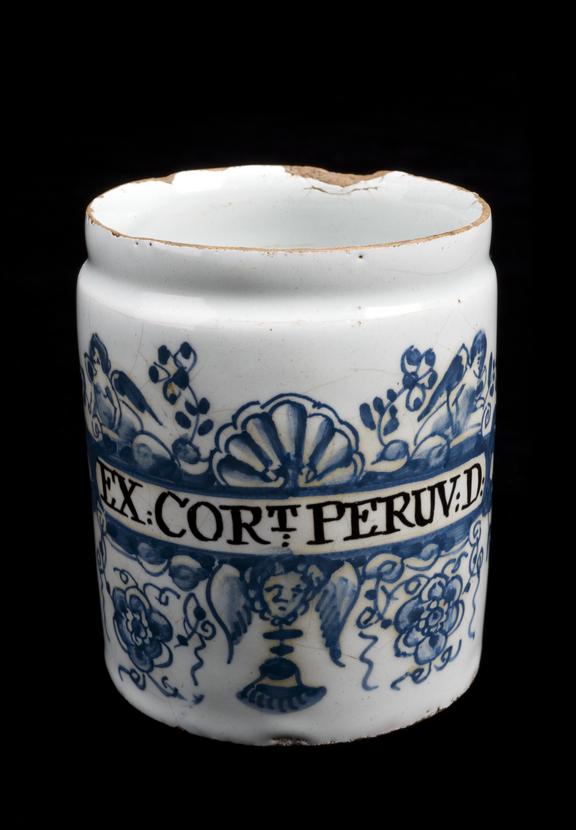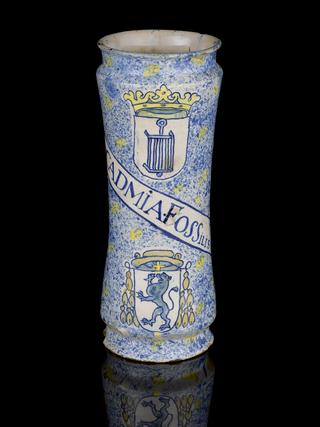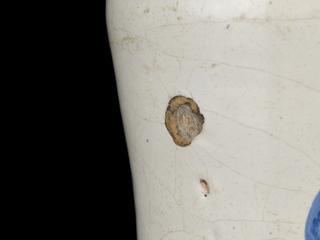

Lambeth delftware pill jar, cylindrical, decorated in blue and white with the cherub and shell pattern, labelled EX:CORT:PERUV:D: (hard extract of cinchona bark), 1710-1740. Has no lid.
The inscription “EX:CORT:PERUV:D” painted on to this ceramic drug jar is abbreviated from the Latin and translates as “hard extract of cinchona bark”. Cinchona bark was used ground up or in drinks as a pain and fever reliever, but was especially useful in the treatment and prevention of malaria. It was not until the 1800s that quinine, the active component of cinchona, was isolated. This allowed more effective anti-malaria drugs to be developed.
For this container, powdered bark would have been added to water and boiled for an hour or two, until turning a red colour. Once cooled, the process was repeated until the liquid was clear. The extract was kept in two forms. The soft form was used for pill making; the hard form could be ground up at a later date.
Details
- Category:
- Medical Ceramic-ware
- Object Number:
- 1986-952
- Materials:
- ceramic
- Measurements:
-
overall: 87 mm 84 mm, .22kg
- type:
- drug jar
- credit:
- Sotheby's (New Bond St)




